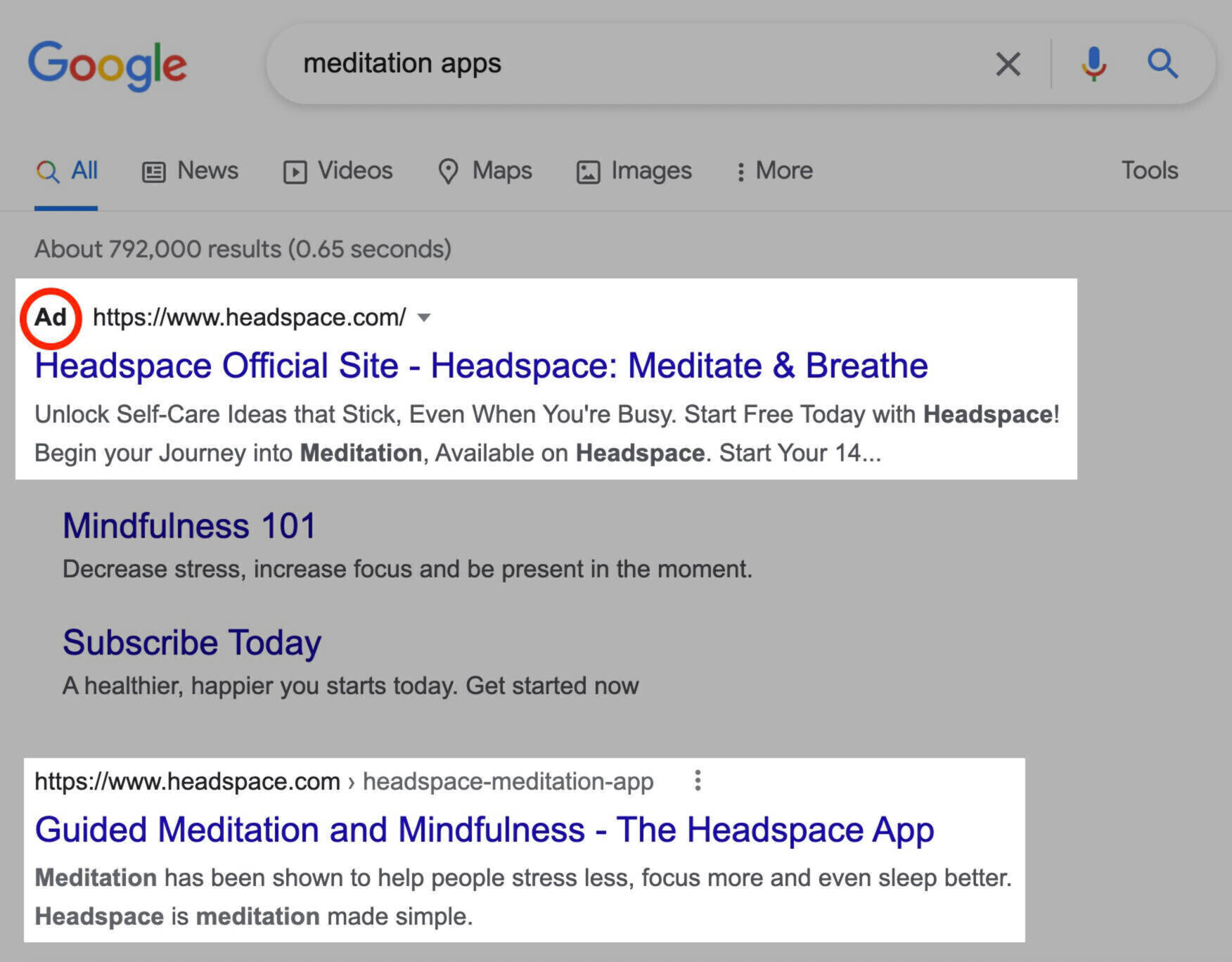What Is Search Engine Marketing & How Does It Work?
SEM (search engine marketing) is a digital marketing strategy that aims to increase the online visibility of websites on the search engine results page (SERP).
Original post
This post has been originaly posted on semrush blog and here is the link: What Is SEM (Search Engine Marketing)?
Overview
This usually comes in the form of search ads that you see above non-paid, or organic, results.
Here’s what it looks like:

In this article, we’ll cover:
How search engine marketing works
- How ad auctions work
- SEM best practices
- Let’s get started.
SEM vs. SEO
SEM is a digital marketing strategy used to increase your site's visibility in search results. This can include both paid and organic (SEO) efforts.
While SEM broadly covers more than just paid marketing, it’s often also referred to as pay-per-click (PPC) marketing. This is a business model where marketers pay each time someone clicks their ad.
SEO, on the other hand, refers to organic results—i.e., “free” traffic as a result of providing relevant, useful content that ranks well on Google.
An effective SEO strategy can help you earn long-term traffic, while search engine ads can help improve your visibility and earn clicks from people ready to buy your product.
While SEM is a nuanced term, we’ll focus on using it to reference a paid search strategy from here on out.
How Does Search Engine Marketing Work?
SEM can be a powerful way to reach new customers and drive revenue because it ranks your site above organic results on the search engine results page (SERP).
Just look at the SERP for “meditation apps.” Headspace ranks first organically, but also holds the top Google ad spot:

You may be wondering why they’re bidding on the keyword if they already rank organically.
The reason is simple: they take up more real estate on the SERP this way. And even if their organic rankings fluctuate, they still have a chance to appear at the top of the page.
It’s especially important to hook users from the top of the SERP if they’re ready to buy. Otherwise, they may choose the easiest, most visible option (which may be your competitor’s ad).
But for your site to appear at the top of the SERP, you’ll need to win an ad auction.
How Ad Auctions Work
To secure coveted paid ad spots at the top of the SERP, advertisers bid on keywords. Whoever wins the auction gets the top spot. For our purposes, let’s cover how bids work in Google Ads.
To enter an ad auction, you’ll need to identify two important things:
- The keywords you want to bid on
- How much you’re willing to spend per click for each keyword The right price will depend on your industry—for example, the average CPC for insurance and legal is higher than less competitive niches like home and garden.
Learn more about some of the expensive industries here.
Once Google determines that the keywords you bid on appear in users’ search queries, your ads will be entered into the auction.
Ads will only appear on searches with enough commercial intent (i.e., users are ready to buy). Like the ad for Headspace above—people are ready to buy a subscription.
Give me the latest news!
Subscribe to my newsletter to receive updates on the content you care about.
By clicking “Subscribe” you agree to Trendly Privacy Policy and consent to Trendly using your contact data for newsletter purposes